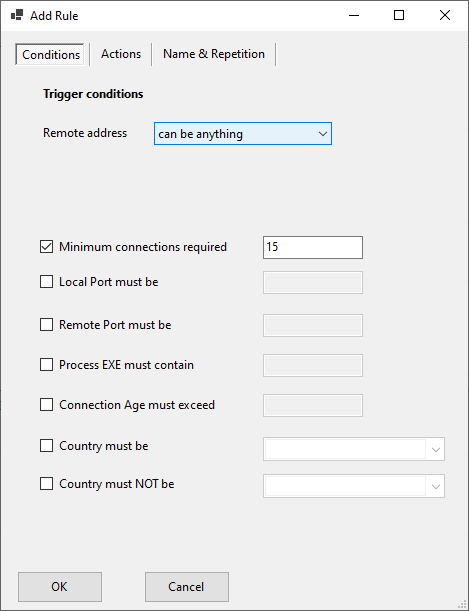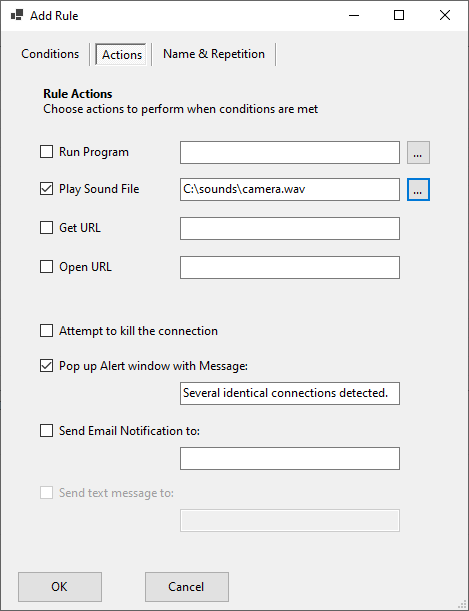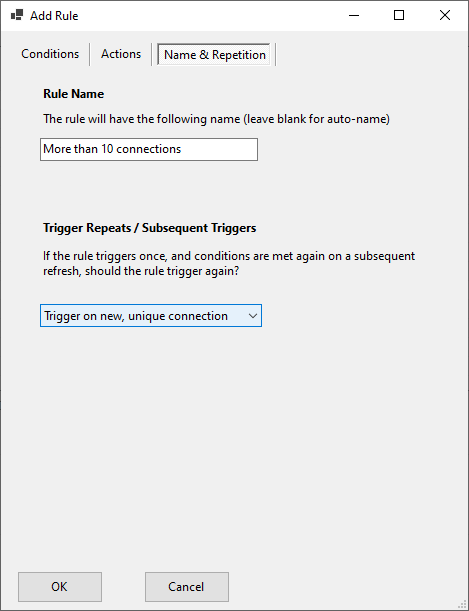
X-NetStat 6.0 Documentation
Last Revised: May 2021
 |
|
Rules
The rules system provides a way for X-NetStat to respond to network events and activity. By defining rules, the program can act upon certain incoming & outgoing connections.
A rule is defined by conditions, and actions. When the defined conditions are met, the defined actions are executed.
You can create a rule several ways:
Right click a connection -> Make Rule
Rules button on toolbar
Rules node under Options
Rule Conditions

| Field | Description |
| Remote Address | Define remote address conditions. |
| Minimum connections required | The number of identical connections (based on remote IP, local port, and remote port) needed before triggering |
| Local port must be | Only trigger when the local port matches the value. |
| Remote port must be | Only trigger when the remote port matches the value. |
| Process EXE must contain | Only trigger when the process EXE name contains the specified substring |
| Connection Age must exceed | Only trigger when the connection age exceeds a certain number of seconds |
| Country must be | Only trigger when the remote IP address belongs to a country |
| Country must NOT be | Only trigger when the remote IP is NOT from a country |
Rule Actions

| Field | Description |
| Run Program | Run a specified program (.BAT, .EXE, .PS) To specify command-line arguments, include them after the path to the executable file. The wildcard %ip% can be used to pass in the remote IP address. |
| Play Sound File | Play a .WAV file when the rule triggers |
| Get URL | Fetch a URL internally with X-NetStat's HttpClient |
| Open URL | Open a URL in the default browser |
| Attempt to kill the connection | Try to forcefully terminate the remote
connection. X-NetStat must be run as administrator (with elevated privileges) for it to work. |
| Pop up Alert window with message | Display a message alert with custom text. |
| Send Email Notification to: | Send an email about the rule triggering. SMTP settings must be defined under Options for this to work. Check the Event Log for any delivery failure messages. |
| Send text message to: | Send a text message to a phone. This feature has not been implemented yet. |
Rule Options

Rules are automatically named; but if you want to specify a custom name, you can do so here.
You can define reptition behavior in this tab. The options should be self-explanatory.
Rule Mechanics
If any other information needs to be added about how Rules work, it will eventually be displayed here.
Any questions? Contact us.